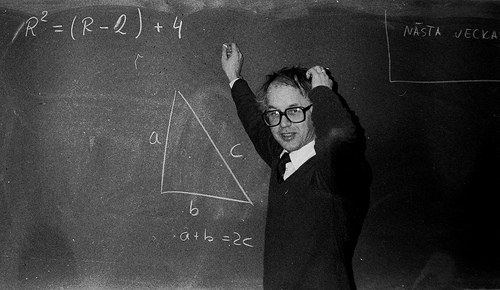Combining Ted Talks with IELTS: A Guide
English study has become ever more critical for students over the last few decades. The stakes have never been higher and the costs hardly seem to be on a steady decline. The average students spend countless hours studying, so the need to create lessons that are not only functional but also engaging is becoming ever more important. Having taught IELTS for a number of years I have first-hand experience of the anguish and sheer terror that this exam brings. Over the years I have tried to incorporate a number of engaging activities to the classroom to better provide an all-around learning experience. Some students take to these quite well while others view IELTS as a game with secret pass-phrases and techniques that bypass the main point of the test.
The writing test, while arduous for many students, is a near facsimile of exercises that students complete during their secondary education. Understanding how to answer questions and determining the context it is set in is also part of life at work. Middle managers and heads of departments are constantly writing policies and committing to training for staff, all of which needs justification and explanation. In this way, the IELTS exam, especially the writing section, is a fair way to induct students into a non-colloquial English speaking community.
The accident of using TED Talk with IELTS
To deal with these issues and to prepare students for more formal speaking forms, I often use TED Talks and video snippets to maximise learning. Part of the issue with IELTS writing task 2 is that students do not know enough about the topic to give a cohesive answer. The times I have taught task 2 I often find myself explaining the subject of the question first before tackling the question itself. I mainly did this by getting them to watch a TED Talk and then arranging a debate or group discussion exercise (with the right vocab) to stimulate ideas and solutions to problems.
There is evidence to say that a properly taught topic can lead to better learning outcomes. This study Teaching IELTS Writing Module through English Debate: A Case Study in Thailand kept at Springer Journals, highlights the learning outcomes of students who do follow through on the subject matter prior to going through the writing section. Asking students to submit an essay which is essentially a piece on critical thought is difficult. Time and discussions are needed to better have students adapt to becoming critically minded.
A quick guide to using TED with IELTS study
Below are some tips and tricks to getting your students more involved with the subject and how to teach them
- Warmer questions that are open-ended. If you’re teaching an IELTS writing question that is based on city living or an ageing population for instance, then having a list of questions that are related to the subject is great for getting them thinking about the subject matter. You can supplement the content with newspaper articles. If you don’t have time to do these, then just asking open questions to students and working through possible answers together is a step in the right direction.
- Comprehension questions for the TED video. I’ve seen many teachers just play a video and not have an outcome afterwards. There is little motivation or need to pay attention once the play button is pressed. Having a measurable activity after the video is key. It could be comprehension questions like, “what does the speaker think of rural life?”, or it could be true or false questions like “she believes city living is just stressful”. It’s also possible to use a gap fill that are questions themselves.
- Vocab picking. If your class are motivated then using a reverse dictionary tactic is also great. Have a set of questions that are a definition of words and the students watch the video to find the words themselves. For instance, “an area that is outside the city and is a synonym to the countryside”. Students try to deduce the word through the presentation.
- Nuance in vocab. The TED presentation can be used to decide between a set of words. For example, the presenter may say “Bitcoin is the inevitable future”. Students can be given a set of questions where the word “inevitable” is compared with “definite”, “absolute” and etc. Then have students compare meanings.
- Listing points for essay planning. The TED video can be used to list; opinions, pros and cons, problems and solutions and more. Having students listen and simply list them gets them to think critically. It’s also something they can debate afterwards.
I’m sure there are many other activities but these are the few that I employ. If you are keen to try this approach then I recommend checking out my TED Talk with IELTS writing lesson plan (refers to innovation in housing), which can be downloaded for free.




